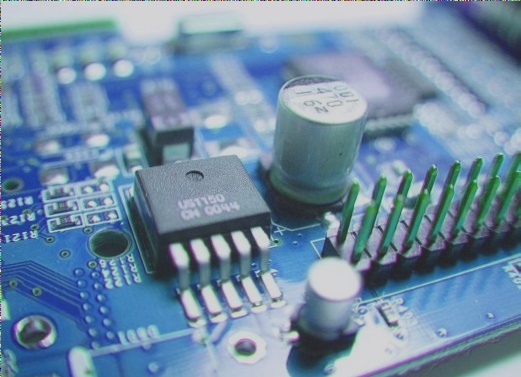What is a Fiducial Mark and How Does it Work?
A fiducial mark is typically a circular pad or another shape of exposed copper surrounded by a clearance area. It serves as a reference point for automated machines, such as pick-and-place machines, as well as for PCB stencil alignment to ensure accurate placement of components on the board. During assembly, these machines utilize computer vision systems to detect the fiducial marks and use their positions to align the PCB and components. Fiducial marks are especially valuable for surface-mount technology components, and it is recommended to place a mark near packages with small pitch sizes, such as BGA, QFN, and QFP.

Figure 1: Fiducial Mark
Types of Fiducial Marks
There are two primary types of fiducial marks commonly used in PCB designs: global fiducial marks and local fiducial marks.
Global fiducial marks, also known as panel fiducials, are typically placed near the corners of the PCB or on the panelization rails that hold multiple PCBs together during the assembly process.
Local fiducial marks are generally smaller than global fiducial marks and are placed in areas with high component density or complex routing. By using local fiducial marks, assembly machines can more precisely locate component footprints, reducing errors in component placement.
As a general guideline, at least two global fiducial marks are recommended: one at the lower left corner and another at the upper right corner of the board, placed according to a three-point grid-based system.

Figure 2: Global Fiducial Mark and Local Fiducial Mark
Advantages of Using Fiducial Marks for PCB Assembly
Although other drilled holes or patterns might be present on the PCB, they may not be suitable for alignment due to size, shape, or positional inconsistencies, which can lead to inaccuracies during component placement. Additionally, these holes or patterns might be obscured by the solder mask or silkscreen, making them difficult to detect. In contrast, fiducial marks are designed with standardized shapes, sizes, and positions, ensuring a clear and consistent reference point for alignment.
Guidelines for Using Fiducial Marks in PCB Design
When incorporating fiducial marks into your PCB designs, there are several important guidelines to follow:
First, ensure that the diameter of the fiducial marks is consistent across the entire PCB design to maintain accurate alignment. Typically, the diameter of a fiducial mark ranges from 1 to 3 mm.
Second, if your PCB design includes components on both sides, it is essential to add fiducial marks to both sides. The absence of fiducial marks on the second side can create difficulties for automated equipment when flipping the board to assemble components on the opposite side.
Third, ensure that the fiducial marks are free from solder masks or any other coatings. This will make the marks easily visible and distinguishable from surrounding materials, enabling accurate and reliable detection by automated assembly equipment.
If you have any questions about PCBs or PCBA, please feel free to contact us at info@wellcircuits.com.



